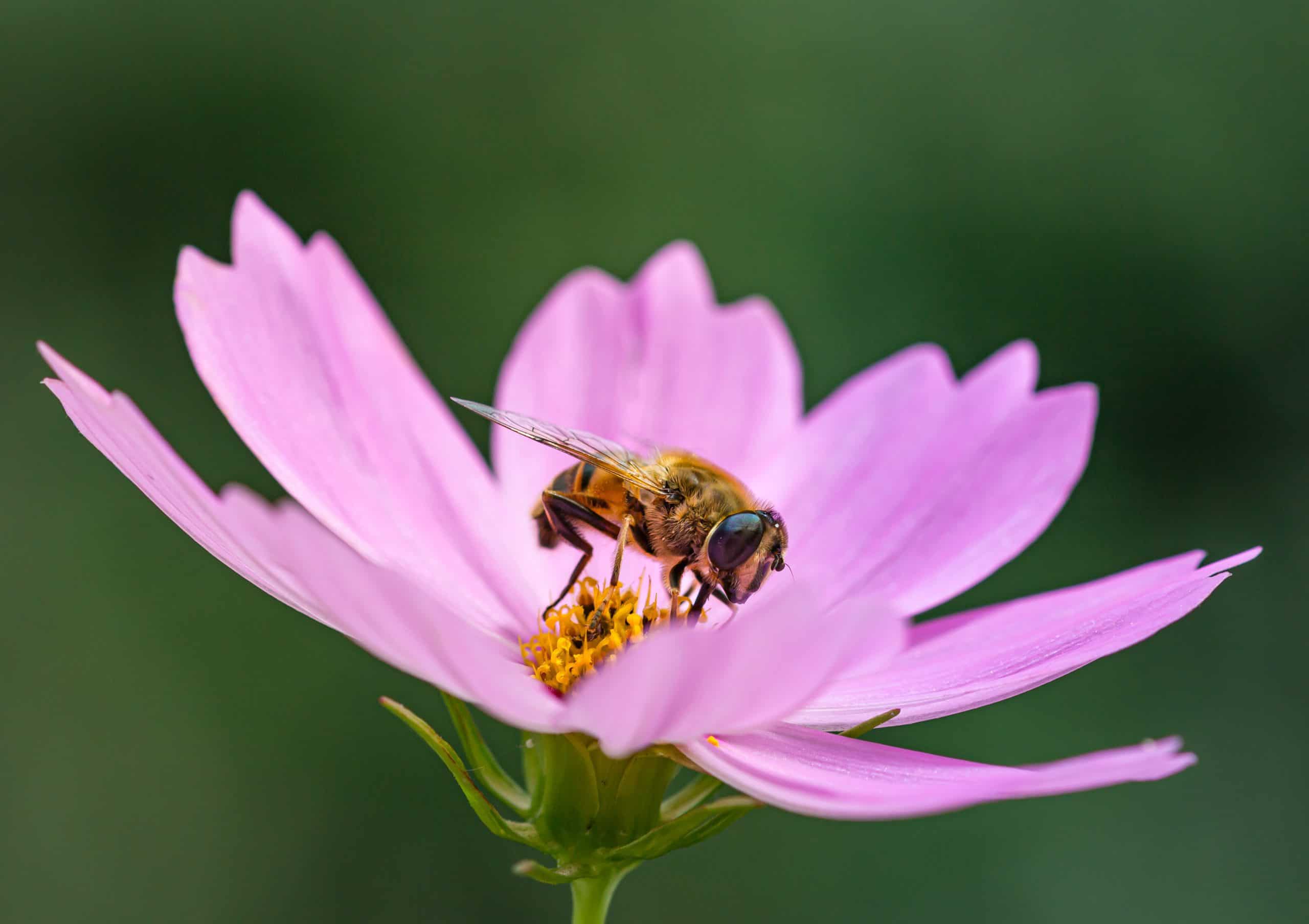
19 Aug Save the Bees once and flor-all!
When you think of calling a landscape company, it is usually to change your outdoor space that naturally has your lifestyle in mind, not bees. Creating a space to relax in, entertain, or sit by a fire. What if we told you that you could create an area that is not only enjoyable for you but gives back to nature and our pollinators? Would you do it? A small urban garden like a window box can make a massive difference in the lives of local pollinators. Our team of passionate experts can help design and build pollinator-friendly landscaping to provide all of the essentials needed for our pollinators to thrive. Let’s buzz through their basic needs to help you get started.
What is pollination? Pollination is the process of transferring pollen from the flower’s male reproductive structures to the flower’s female structures resulting in seed production. Pollination is critical for growing most plants, nuts, seeds, fruits, and vegetables we rely on for food. Did you know that over 4,000 species of native bees in North America are responsible for pollinating over 150 crops and contributing $24 billion to the US economy, not including the crops used to feed our livestock? The role of our pollinators is a vital part of our world food supply, not just here in Nebraska’s farm country but across the globe because researchers have noticed an alarming decline in pollinator populations. Habitat loss can be attributed to both man-made development and climate change.
When creating a pollinator garden, flowers are usually the first element, but other resources like water and nesting need to be considered as well. Creating a garden for pollinators gives them a place to find necessary food resources, nesting habitats, and water. A garden created using native plants will produce blooms or provide resources that pollinators need throughout three of our four Nebraska growing seasons. Native plants can provide a holistic approach to conserving our beneficial insects and saving you, the homeowner, time and money. Native gardens are lower maintenance because, once established, they typically do not require watering or fertilization. Most are acclimated to Nebraska’s harsh winters and temperamental temperature swings during growing seasons. CLICK HERE for a list of sustainable native pollinator plants that bloom throughout the Spring, Summer, and Fall put together by the University of Nebraska – Lincoln Extension Office.
Nesting for a pollinator can vary from underground to a hive high in the trees. Native gardens allow for minimal fall cleanup to provide dead foliage for an overwintering habitat for the pollinators that remain throughout the cold months. Of the 4,000 species of bees in North America, 1,200 are tunnel nesting which means they nest in hollowed-out tubes and stems. An additional 2,800 species of bees are ground-nesting; this means that they require some soil to be exposed to thrive. This subset of bees is susceptible to being drowned from overwater.
As a gardener, you can aid in bee-ing the solution to support our native pollinators! Start by providing a water source like a pebble tray in a shaded garden area, then give us a call today to start designing your pollinator garden.
Photo by TheWonderOfLife from Pexels


